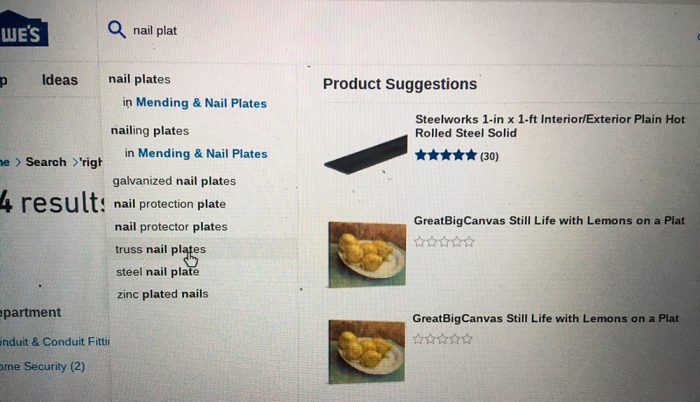Podcast 251: Adding Overhangs, Abandoning a Re-side, and Stopping Sound
Kiley, Rob, and Patrick hear from listeners about building science training and saunas before taking questions about adding overhangs, stripping siding, sealing a crawlspace, and stopping sound between floors.
Follow the Fine Homebuilding Podcast on your favorite app. Subscribe now and don’t miss an episode:
 |
 |
Tess tells the crew about saunas. Ian offers his insights about B.S. Rosanna describes one place to learn about building science. Ethan shares his secret for managing Mitsubishi minisplits. Adam asks if he should add overhangs. Alex asks if he should abandon his siding project. Tony wants to know if he should seal his crawlspace. Elizabeth asks about stopping sound between the floors of her new home.
Editor Updates:
Kiley: Septic
Rob: Kayaks
Jeff: Little house jobs
Patrick: AC cleaning and patio plants
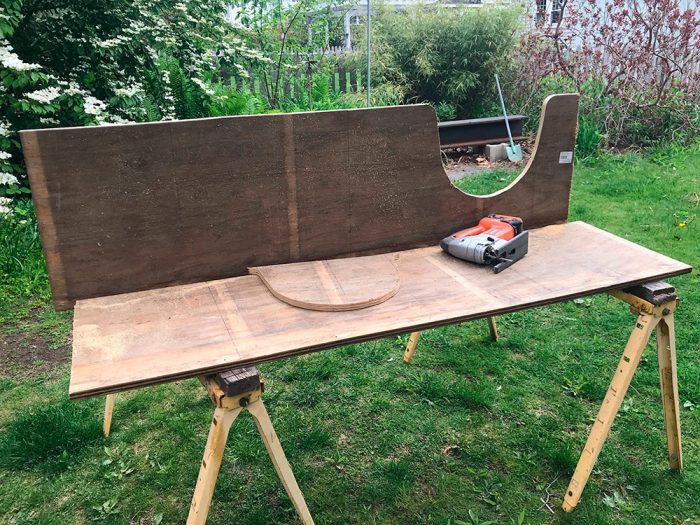 |
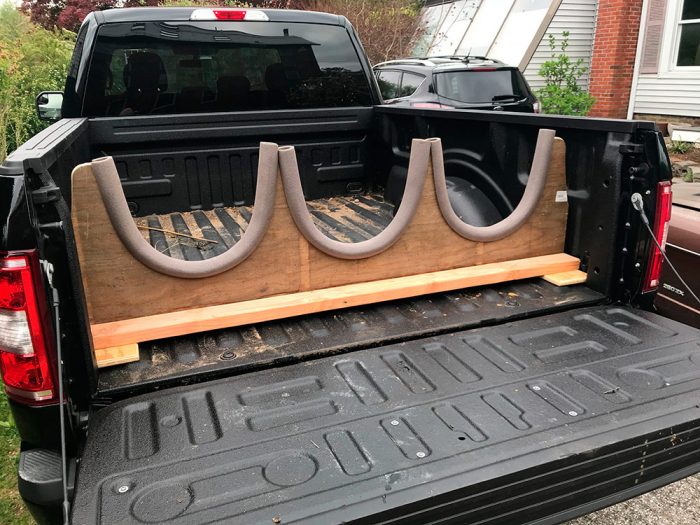 |
 |
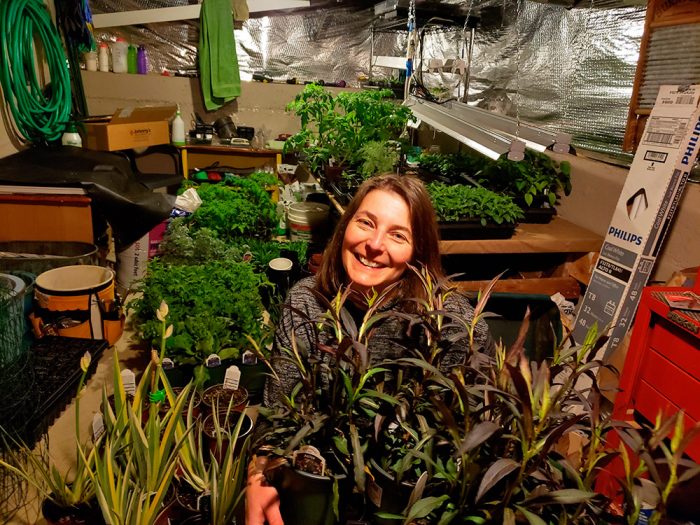 |
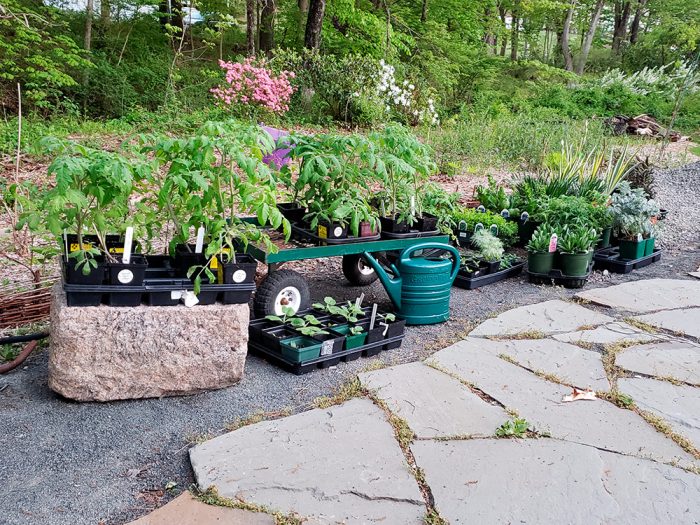 |
Listener Feedback 1:
 Tess writes: Hey FHBpodcast, I got a chuckle out of your question in episode 247 about how Minnesotans and Canadians survived before modern -insulation/-heating. While I’m not a native Minnesotan, I spent my formative years living in the Upper Peninsula of Michigan and have some insights into your question.
Tess writes: Hey FHBpodcast, I got a chuckle out of your question in episode 247 about how Minnesotans and Canadians survived before modern -insulation/-heating. While I’m not a native Minnesotan, I spent my formative years living in the Upper Peninsula of Michigan and have some insights into your question.
The answer: Saunas (sow-nahs)
When Finnish immigrants began to move to the Great Lakes in the mid-1800s they brought their sweatbox traditions with them—to the chagrin of their more modest neighbors. Often when a Finn began their homestead in Minnesota… they’d actually built a sauna before they’d build a house! Nothing like living in a one-room shack that was nightly stoked to 195-200F in order to bathe with your family. Which to survive in places that experience -40F or 200-300 inches of snow wasn’t a bad idea.
The oldest sauna known to date is the Cokato savusauna (sa-voo-sow-nah) which was built in 1868.
Unfortunately, this building had to be moved from its original roadside location because the non-Finnish neighbors complained about public nudity and demanded its removal. Needless to say, the Finns ingenuity wasn’t quite socially accepted.
There’s a great book about the history of the sauna which you can find here:
The Opposite of Cold: The Northwoods Finnish Sauna Tradition
My earliest memories include weekly trips to the sauna house. Needless to say, it gave me great joy to find this book. One interesting thing you’ll notice in the photography is that while each of the sauna structures follows the same basic principle (room, stove, rocks, steam, bare butts) there’s quite a variety in the architecture. There’s also a great chapter dedicated to the engineering of the sauna stove.
Listener Feedback 2:
Ian writes: Patrick & Podcasters, In 2019, while still residing in the Northeast, I had the opportunity to take in a lot of B.S. schooling as well as working for a contractor who was a member of NESEA (Northeast Sustainable Energy Association). Admittedly I did not know much about “B.S.” before engaging in these opportunities.
Classes I attended:
Building Science Corporation – Renovation/Rehabilitation
-Great class. highly recommended (Go for the B.S. Stay for the open bar)
Yestermorrow – Net Zero Insulation Strategies
-Very nerdy. Learned basic energy modeling and U factor calculations. Great instructors who are committed to being available to students post class.
Association for Energy Affordability – Passive House Tradesperson
-Unbelievably nerdy. Some concepts were difficult. Learned advanced energy modeling techniques and PHPP. Learned how to set up and perform blower door testing. Passed a proctored exam that bestowed upon me cool initials to put after my name! (take that 3rd grade teacher who said I’d never be good at test taking!!!)
One thing that stands out to me in this experience is the amount of things I “learned” or read that contradicted something else I had “learned” or read. Digging deeper into these contradictions was where I learned the most. B.S. is a wide ranging topic (mind bogglingly nuanced if you want to add carbon accounting to B.S. as some do) with many different standards and practices that work in one climate zone but not in another and value different building materials in different ways. Our friend Andy Engel has been known to refer to PH Window U factor specs as a “fetish”…
My advice to others is soak up all the information you can get but the devil very deep in the details. And you will not learn much unless you keep digging and continue to re-evaluate what you think you know as you dig.
Listener Feedback 3:
Rosanna writes: Hello, I’ve just finished listening to episode 247 which discussed ways to learn about building science. Are you familiar with the International Institute of Building Enclosure Consultants (IIBEC). They offer many educational opportunities. Professionals can also earn recognition in various ways, for example, there are over 50 Registered Building Enclosure Consultants.
I enjoy the podcast and work professionally with commercial buildings and appreciate the exposure to residential construction.
Listener Feedback 4:
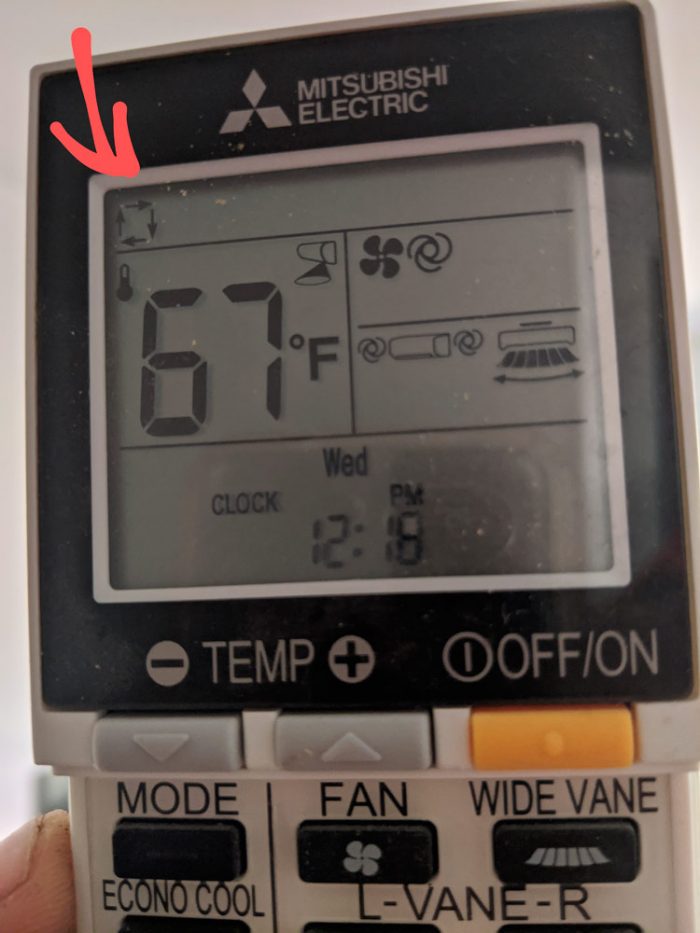
I’m not sure this is any help, but on Mitsubishis, at least, there’s a constant temperature setting which will switch from heating to cooling depending on what is necessary.
I learned this the hard way, because I had that setting inadvertently chosen on a moderate winter day, and in the early afternoon my unit switched to cooling mode due to solar heat gain in the house. I was quite surprised to feel cool air blowing on me until I realized that my unit was working to maintain a set temperature rather than just backing off when warm temperatures had been achieved.
I’ve attached a photo of the handheld controller setting indicating the mode in which a constant temperature can be maintained. I don’t see any use for this myself, but it could be useful in industrial or scientific settings or if someone has very distinct indoor temperature needs. Thanks for the podcast.
Question 1: Should I add overhangs to my roof to protect the siding?
Adam from Chittenango writes, While it was actually a lot of fun listening to everyone try and pronounce my town’s name. On the off chance you want to pronounce it easier here is a local news clip with the correct pronunciation.
For whatever reason a syllable from the spelling is dropped in pronunciation.
Chittenango – spelling
Chit-nan-go – pronunciation
As an additional hint towards pronunciation adolescent males in town frequently replace the “c” with an “s” but you shouldn’t say that on air.
The house my wife and I bought last fall is an unusual cape (see attached pictures) in that it has fairly deep overhangs on the front and back of the house. The shake siding on the front and back under the overhangs is in very good shape but the shake siding on gable ends with no over hangs is in terrible condition and needs replacing.
My wife and I would like to add overhangs to the gable ends before replacing the siding to give the new siding the same protection as the front and back.
So our question is twofold, the first part is a design question (Hello Kiley!) can we add overhangs without making the house look stupid?
Should we add overhangs only at the top of the gable end, or should we also wrap the overhang from the front and back around the gable ends between the first and second floor? There already is a tiny little strange overhang that wraps around on one corner a couple of feet.
The second question is structural, how do you add overhangs to an existing house without them falling off? Is this a matter of just needing lots of structural screw or lag bolts? Or would visible support brackets be required?
We realize that adding overhangs would require a new roof, but per GBA (Insulating a Cape Cod House) if we want to control our ice damn problems we need a new roof anyway.
Thank you.
PS: I would like another sticker! Is there a limit to how many you can get? Or can I try and compete with Barbara for the largest collection?
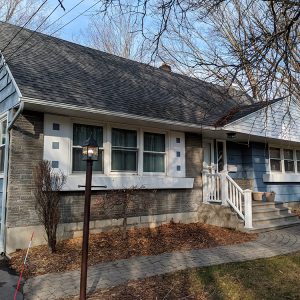 |
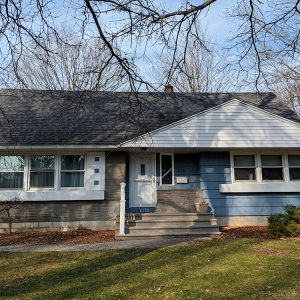 |
 |
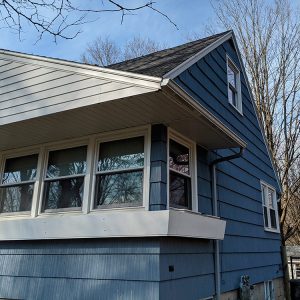 |
 |
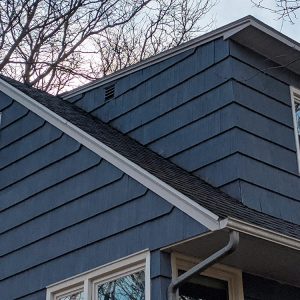 |
 |
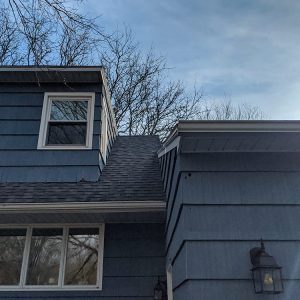 |
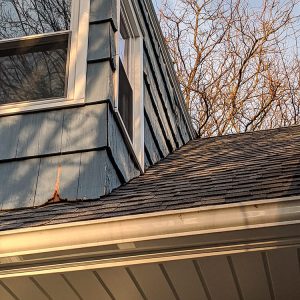 |
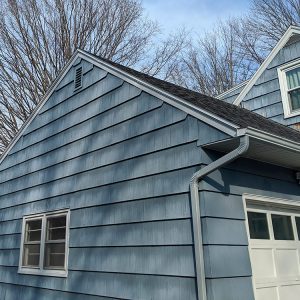 |
 |
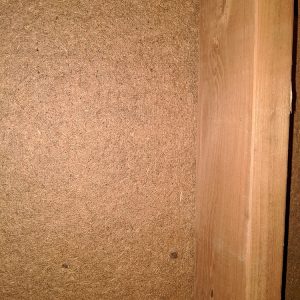 |
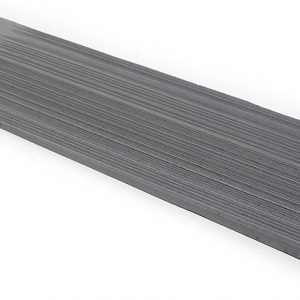 |
Related links:
- Miller Shingle 18 Inch Rebutted and Rejointed (R&R) Natural Groove Cedar Sidewall Shingles
- Extending gables to make overhang for foam
- Adding roof overhangs
Question 2: Should I continue replacing the siding on my house, or just repaint the sides I haven’t worked on yet?
Alex Western from Massachusetts writes, Thank you for the great work on the podcast. You guys are a great source of information, and just good company, especially in all this isolation.
I’m interested in your thoughts on whether I should continue re-siding my 1940 house in Western Massachusetts — a project I started last year — or cut bait and paint it instead.
I am an ambitious DIYer with a small handyman business, and spend a lot of time working on my house and barn. I started this siding project after getting a quote from a painter of about $12,000 to paint the whole house. I don’t like scraping, sanding and painting, particularly where lead is involved, but I had some siding experience and figured I could re-side the whole thing for less and put on a decent WRB. There’s diagonal board sheathing, a crumbly old white paper of some kind and cedar clapboards now. I went with Benjamin Obdyke’s Hydrogap, a drainable housewrap that I saw as a lazy man’s rain screen. For siding I went with pre-painted HardiPlank, which seems low-maintenance and inexpensive compared to cedar, but nicer aesthetically than vinyl.
Having completed one gable end and a tricky section over the garage last year, I am having trouble getting motivated to start again this year, and am questioning the whole premise of the project.
Number one: it’s more time consuming and expensive than painting. Two: it seems wasteful to throw out all the old cedar clapboards, and maybe an aesthetic mistake. A friend said the other day the sections with HardiPlank looked too uniform, almost like vinyl. Three: the heights bother me; it’s easy enough to paint on a ladder, but I’m not sure how I would work on the siding comfortably in some high spots. Four: I hear you can get away with less scraping and sanding if you use a primer like Mad Dog, so maybe the prep won’t be so bad.
Then again, I heard Peter Yost say on the ProTalk Podcast the other day that when you dense-pack the walls in an old house with cellulose, you better improve your moisture control, which was very unnerving because we had the walls dense-packed a year ago. I have some siding know-how and tools, so maybe I should just put those to use again and see it through.
What do you think, keep plugging away at the HardiPlank, or paint instead? What would you do?
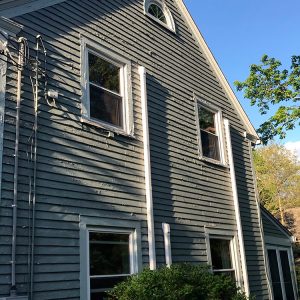 |
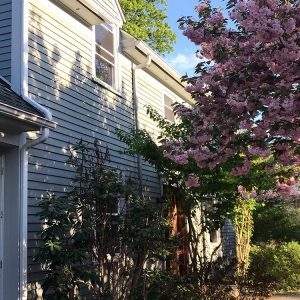 |
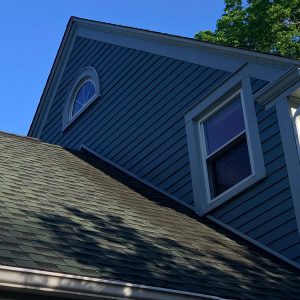 |
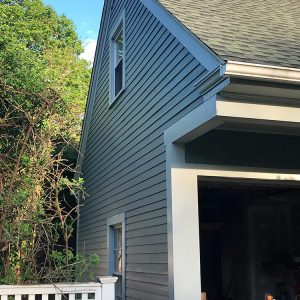 |
Related links:
- Safer Scaffolds for Quick Jobs
- Scissors on the Job Site
- Fiber-Cement Siding: An Attractive Alternative to Wood
Question 3: Is a vented crawlspace OK on a house in the Pacific Northwest?
Tony in Issaquah writes, Hi FHB Podcast, First off, love the podcast. Making my way through all 240+ podcasts you’ve done so far. My question is about whether or not I should air seal and insulate my crawlspace walls or just put down a vapor barrier and leave the vents.
I live in Issaquah, WA 18 miles east of Seattle. The house is a 1300 sq. ft. 1961 ranch house at the base of Tiger Mountain, one of many built in the area for the families of the loggers who worked the hillside. When we bought the house it was heated with baseboard heaters which we have since removed. It is now heated with a ductless heat pump with a ceiling cassette in the main living area supplemented with a small Cadet electric wall heater in each of the 2 bedrooms. The crawl space is 2 feet high with no vapor barrier and no mechanicals except plumbing. The crawlspace seems mostly dry except for one corner with some grading issues on the exterior of the house that I am currently working on. I haven’t checked a humidity level, but I do know that we run a dehumidifier in the living area of the house and have to empty a gallon per day or so.
I’ve listened to many of your podcasts and read many articles about it and it seems like sealing the crawlspace is desirable, but one of the things I read was Martin Holladay’s article Building an Unvented Crawlspace in which he cites a couple studies that in the said in the Northwest vented crawlspaces work acceptably most of the time.
So back to my original question, should I build an unvented crawlspace, or should I keep the vents? I know I’m going to put down vapor barrier at the very least. If the answer is I should build the unvented crawlspace how should I condition the crawlspace? I don’ t have any heating ducts I can tap into. Can I just put a dehumidifier in the crawlspace and call it good? Or do you think I would need to put some registers in the floor to connect the crawlspace to the living area. It would be very hard to convince my wife to do that I’m certain.
Thanks for all the information and entertainment over the years. I recommend your show to everybody.
Related links:
- Building an Unvented Crawlspace
- Unvented Crawl Spaces: Whose idea was that?
- Vented crawl spaces in western Washington
Question 4: Would spray foam insulation between my floor joist be an effective soundproofing construction detail?

Elizabeth writes, Hello Podcast, I would love to get the podcast input on reducing sound transmission between our main floor and lower level (walk out basement) in a new construction home we plan to break ground on this fall. We’ve used the GBA model as our starting point and are wondering if we can make a swap from the 2 layers of drywall glued together to a layer of spray foam. It seems to me that spray foam would increase the mass of the barrier and would seal better between joists than drywall sheets cut to size. Also, spray foam could be less expensive than a drywall/glue sandwich when you factor in labor costs.
Related links:
END NOTE:
From Stephen: Lowe’s product selection suggestions for nail plates…
If you have any questions you would like us to dig into for a future show, shoot an email our way: [email protected].
If we use your question we’ll send you a FHB Podcast sticker!
FHB Podcast T-shirts!
Represent your favorite podcast! Available in several styles and colors. Made from 100% cotton. Find the Podcast t-shirt and more cool products in the Fine Homebuilding Store.
Fine Homebuilding podcast listeners can now get 20% off anything in the Taunton store, including the The Visual Handbook of Building and Remodeling, 4th Edition.
Use the discount code FHBPODCAST to take advantage of this special offer.
We hope you will take advantage of a great offer for our podcast listeners: A special 20% off the discounted rate to subscribe to the Fine Homebuilding print magazine. That link goes to finehomebuilding.com/podoffer.
The show is driven by our listeners, so please subscribe and rate us on iTunes or Google Play, and if you have any questions you would like us to dig into for a future show, shoot an email our way: [email protected]. Also, be sure to follow Justin Fink and Fine Homebuilding on Instagram, and “like” the magazine on Facebook. Note that you can watch the show above, or on YouTube at the Fine Homebuilding YouTube Channel.
The Fine Homebuilding Podcast embodies Fine Homebuilding magazine’s commitment to the preservation of craftsmanship and the advancement of home performance in residential construction. The show is an informal but vigorous conversation about the techniques and principles that allow listeners to master their design and building challenges.
Other related links
-
- All FHB podcast show notes: FineHomebuilding.com/podcast.
- #KeepCraftAlive T-shirts and hats support scholarships for building trades students. So order some gear at KeepCraftAlive.org.
- The direct link to the online store is here.
